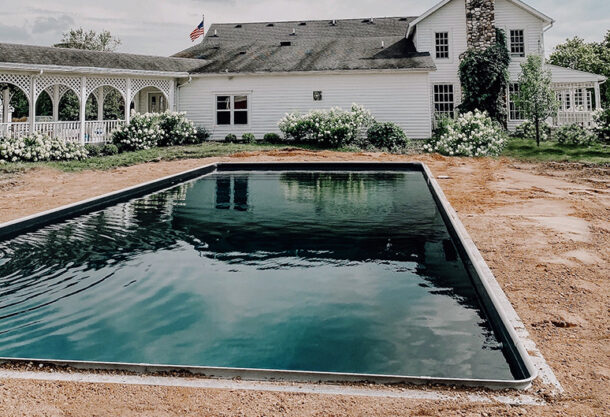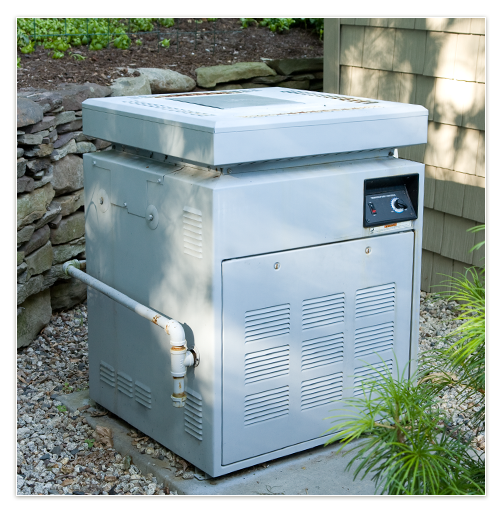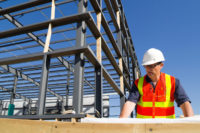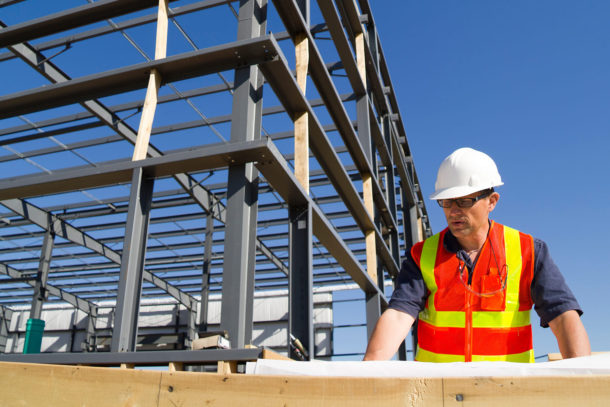Propane Council expands program funding aimed at reducing greenhouse gases while increasing a homebuilders bottom line. Residential homebuilders can apply now for the Propane Construction Incentive Program and take advantage of money for installing propane appliances. Supported by the Propane Education & Research Council (PERC), the expanded program amplifies efforts to install propane appliances in Read more
Bryan Cordill

Propane Council expands program funding aimed at reducing greenhouse gases while increasing a homebuilders bottom line.
Residential homebuilders can apply now for the Propane Construction Incentive Program and take advantage of money for installing propane appliances. Supported by the Propane Education & Research Council (PERC), the expanded program amplifies efforts to install propane appliances in new homes and remodels.

“Homebuilders are being told that electric or solar are the only clean-energy options for homes, but this simply isn’t true,” said Bryan Cordill, director of residential business development at PERC. “Propane—a clean energy option that works in tandem with other energy sources or on its own—should be considered when building or remodeling.”
The Propane Construction Incentive Program encourages the installation of propane appliances by offering a baseline incentive of up to $1,000 to builders or remodelers who upgrade to propane appliances in a new build or a remodel. To qualify, at least one of these propane appliances must be installed:
- $500 Incentive: Boiler, Furnace, Hydronic Air Handler, Combi Boiler (not a heat pump).
- $300 Incentive: Water Heater (tankless or storage tank).
- $300 Incentive: Hybrid Heat Pump with propane emergency heat.
Additional propane applications:
- $100 Incentive (Per Appliance): Cooktop or Range, Clothes Dryer, Standby Generator, Fireplace or Gas Log Set, and/or Propane Gas Piping for Outdoor Equipment.
Applicants can also earn a $500 bonus for installing a propane appliance specific to their region of the country.
The 2022 incentive program helped eliminate more than 18 million pounds of carbon dioxide (CO2) equivalent from the environment. Last year, PERC awarded $1 million in funding to construction professionals who provided data from the Energy Planning and Analysis Tool comparing the emissions of the propane appliances in their new build and remodeling projects to their electric alternatives. Installations included propane furnaces, water heaters, fireplaces, cooktops, ovens, clothes dryers, outdoor grills, and standby generators.
“Participants are not only creating a competitive advantage for themselves, but they are also helping decrease greenhouse gas emissions,” said Cordill. “Propane is available right now and its use is having an immediate and positive impact on the environment. I’m excited to see how many pounds of greenhouse gases we reduce with the help of the expanded program. ”
Learn more about the additional incentive program funding and qualifications, and complete an application at Propane.com/ConstructionIncentive.

Homeowners continue to spend more time in their outdoor living spaces following the COVID-19 pandemic. As a result, the pool, hot tub, and spa industry is experiencing record sales, as well as demand for longer swim seasons. To help pool builders and designers answer this demand, the Propane Education & Research Council (PERC) is offering Read more
Homeowners continue to spend more time in their outdoor living spaces following the COVID-19 pandemic. As a result, the pool, hot tub, and spa industry is experiencing record sales, as well as demand for longer swim seasons. To help pool builders and designers answer this demand, the Propane Education & Research Council (PERC) is offering an updated, free online continuing education course, “Propane Heaters for Pools and Spas.”
This course will help professionals learn how to utilize propane heaters to meet the demands of their customers by exploring their application in both residential and commercial pools and spas. It also examines the pros and cons of various energy sources used for pool and spa heating.

“This is a great opportunity for builders to learn about the benefits of propane heaters,” said Bryan Cordill, PERC’s director of residential business development. “Until a few years ago, heating a swimming pool in much of the United States took a long time and cost a lot of money. But now there are options for high-performing heaters. These technologies can help customers save time, swim later in the season, and do it all for less money.”
In addition to sharing information about the benefits of propane, the course covers other design and specification considerations for heating pools and spas, including heater size, emissions, and heat exchanger types.
“It’s a great way to get up to speed if you’re like the many other building pros receiving increased queries about backyard pools from your clients.” Cordill said. “By taking this course, you can establish yourself as an expert in the various pool-heating options available and build credibility with existing and prospective customers.”

The program is introductory level, with no pre-requisites required. To receive the AIA 1 LU course credits, you must complete it by November 17, 2024.
To learn more about the course and to register for the program, visit www.HanleyWoodUniversity.com/Course/7847/Propane-Heaters-for-Pools-and-Spas.

Real-world findings show building with propane is better for the environment In 2022, the Propane Education & Research Council’s (PERC) Propane Construction Incentive Program helped eliminate more than 18 million pounds of carbon dioxide (CO2) equivalent, from the environment annually. This statistic nearly doubled the program’s impact in 2021. “Installing propane appliances in more than 1,000 Read more
Real-world findings show building with propane is better for the environment
In 2022, the Propane Education & Research Council’s (PERC) Propane Construction Incentive Program helped eliminate more than 18 million pounds of carbon dioxide (CO2) equivalent, from the environment annually. This statistic nearly doubled the program’s impact in 2021.

“Installing propane appliances in more than 1,000 homes across 25 states helped make this achievement possible,” said Bryan Cordill, director of residential business development at PERC. “Many people believe using more electricity is the answer to reducing carbon emissions. But this data clearly shows that construction professionals can make a significant environmental impact when building with propane and utilizing a hybrid approach to home energy decisions.”
The 2022 program awarded $1 million in funding to construction professionals who provided data from the Energy Planning and Analysis Tool comparing the emissions of the propane appliances they chose to their electric alternatives. Installations included propane furnaces, water heaters, fireplaces, cooktops, ovens, clothes dryers, outdoor grills, and standby generators.
The 18 million pounds of CO2 that the Propane Construction Incentive Program helped eliminate is equivalent to greenhouse gas emissions from any of the following:
- 1,839 gasoline-powered passenger vehicles driven for one year.
- 1,038,249,446 smartphones charged.
- 1,075 homes’ energy use for one year.
The Propane Construction Incentive Program offers a baseline incentive of up to $1,000 to builders or remodelers who upgrade to propane appliances in a new build or a remodel. Applicants can also earn a $500 bonus for installing propane appliances specific to their region of the country. Funding is limited, and certain restrictions apply, so complete your application today at Propane.com/ConstructionIncentive.
“Builders and remodelers who participate in the Propane Construction Incentive Program and install propane appliances in their customers’ homes are not only creating a competitive advantage for themselves, but they are also helping decrease greenhouse gas emissions,” said Cordill. “Propane is available right now and its use is having an immediate, positive impact on the environment.”
To learn more about the incentive program and qualifications, as well as propane applications, visit Propane.com.

Commercial construction professionals should specify with low emission propane generators for increased resiliency A new study from the Propane Education & Research Council (PERC) emphasizes the need to accelerate decarbonization today with clean energy sources like propane. The analysis, Power Generation: The Emissions Shifting Problem looks at the recent trends in power generation and how propane Read more
Commercial construction professionals should specify with low emission propane generators for increased resiliency
A new study from the Propane Education & Research Council (PERC) emphasizes the need to accelerate decarbonization today with clean energy sources like propane. The analysis, Power Generation: The Emissions Shifting Problem looks at the recent trends in power generation and how propane systems can offer a low emissions and resilient solution for commercial construction professionals and their customers.

“Popular opinion has been that electrification of everything is the only solution for the climate crisis,” said Dr. Gokul Vishwanathan, director of research & sustainability at PERC. “Unfortunately, this is a very simplistic one-dimensional proposal for an extremely complex multi-dimensional energy and climate problem.”
Climate change induced severe weather events coupled with natural disasters has led to electrical grid failures. Commercial propane generators provide supplemental power for a building’s electrical loads when power from the electric grid is interrupted.
Unexpected outages have increased as the U.S. places growing electricity demands on a century-old grid. In fact, the United States endures more blackouts than any other developed nation. And according to federal databases at the Department of Energy (DOE) and the North American Electric Reliability Corporation (NERC), the number of U.S. outages lasting more than an hour have increased steadily over the past decade. The Energy Information Administration (EIA) conducted an analysis and on average, a person in the US went over eight hours without electricity in 2020. That’s more than twice as long the average American went without power in 2013, the year that the EIA started keeping track. This loss of power to commercial buildings can impact vital systems like smoke and fire detection, elevators, refrigeration units, heating and cooling equipment, health and safety equipment, communications, and many other applications.
To combat those failures, reliance on diesel power generation has increased, creating a bigger emissions problem and degradation of local air quality. Propane power generation equipment, including backup generators and combined heat and power systems can help businesses increase safety and resiliency, avoid economic losses, and reduce emissions allowing businesses to retain their clean operation even with a power failure.
“Replacing diesel assets with propane-powered equipment will continue to push us toward significant air quality improvement and decarbonization,” said Vishwanathan. “It is markedly important to just not focus on electrification of all sectors but on a diversified portfolio that accounts for both market dynamics and consumer preferences.”
The analysis presented the following findings:
- There is a tremendous reliance on diesel generators for commercial and microgrid applications. Sales of diesel generators have significantly increased due to electric grid disturbances caused by severe weather events, exacerbating local air quality concerns.
- Propane can displace diesel generators in these markets and significantly improve local air quality, particularly by mitigating nitrogen oxides and particulate matter.
- Combined heat and power solutions offer both power and heat (and/or cooling), while providing significant reductions in nitrogen oxides, particulate matter, and carbon dioxide emissions.
“We know that customers are not only looking for a reliable power solution, but they’re seeking clean equipment with a low emissions profile, too,” said Bryan Cordill, director of residential and commercial business development at PERC. “Propane is a stable, portable energy source that can help support Americans even when the grid goes down, ensuring continuity of operations. Plus, using propane every day in your facilities helps reduce the strain on our fragile electric grid and the more diverse America’s energy mix is, the more reliable it is.”
Read the complete study and learn more at Propane.com/Research.

Increase efficiency, lower emissions with a clean energy source made in the USA This Earth Day, the Propane Education & Research Council (PERC) is reminding builders, architects, engineers, and contractors that propane-powered systems can help buildings reduce emissions and their overall carbon footprint. “Achieving sustainability goals in new construction or renovation projects is a team Read more
Increase efficiency, lower emissions with a clean energy source made in the USA
This Earth Day, the Propane Education & Research Council (PERC) is reminding builders, architects, engineers, and contractors that propane-powered systems can help buildings reduce emissions and their overall carbon footprint.
“Achieving sustainability goals in new construction or renovation projects is a team effort, requiring input from the builders, architects, engineers, and contractors as well as from the owners, operators, and facility managers who run and occupy buildings,” said Bryan Cordill, director of residential and commercial business development at PERC. “As states and municipalities continue to adopt more demanding emissions standards, it’s important to consider the emissions profile of a building’s systems and appliances—and the energy source powering them.”

Commercial construction professionals and their customers frequently look for reliable, available power solutions with a low emissions profile. Ensuring a sustainable operation is more important than ever as commercial sites try to become better environmental stewards, making propane-powered systems like furnaces, boilers, backup generators, and water heaters an even more compelling choice.
For example, propane water heaters use less source energy and generate fewer greenhouse gas (GHG), nitrous oxides (NOx), and sulfur oxides (SOx), emissions than conventional electric resistance water heaters. When compared to electric heat pump water heaters, propane water heaters have comparable source energy and GHG emissions, with significant reductions in SOx, according to data from the Gas Technology Institute (GTI) and PERC.
Propane-powered backup generators produce considerably fewer emissions than their diesel counterparts. Propane burns cleaner than diesel, reducing NOx and SOx emissions, particulate matter, and carbon dioxide. Data from the Department of Energy (DOE) shows diesel produces 16 percent more carbon dioxide emissions per unit of energy than propane. Additionally, when propane is stored on site, either above or below ground, there’s no risk for land or groundwater contamination. Diesel, on the other hand, has the potential to contaminate soil if it spills or leaks.
“Versatile propane systems can meet the demands of a wide variety of commercial spaces like restaurants, schools, warehouses, hospitals, office spaces, and retailers” said Cordill. “And because propane is an independent and highly portable energy source that works well with other clean energy sources, businesses can rely on it for clean power and energy resilience–not only on Earth Day, but all year long.”
To learn more about how propane can help construction professionals meet environmental and efficiency goals this Earth Day, visit Propane.com/Commercial-Buildings-and-Construction.
